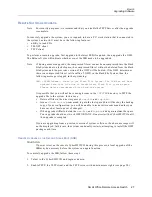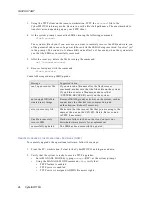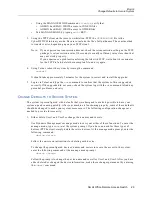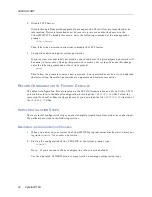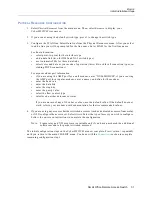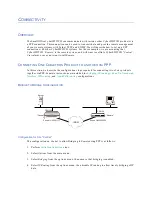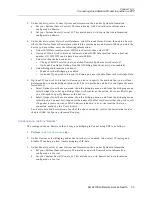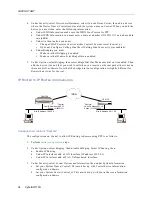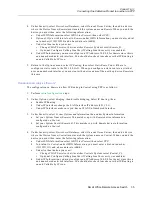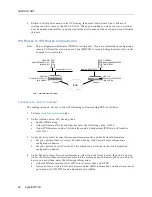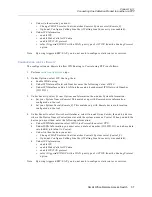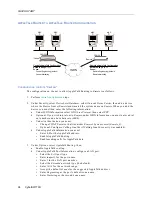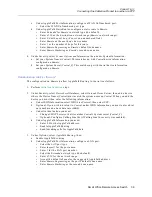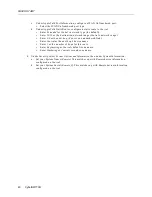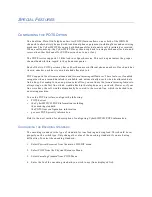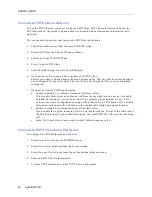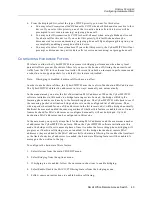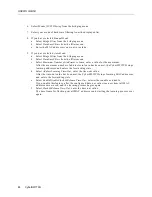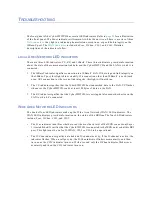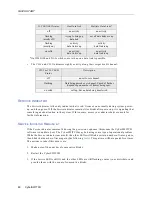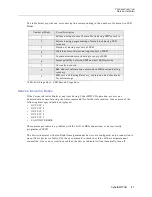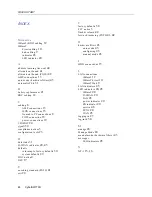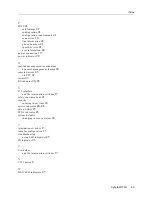
S
PECIAL
F
EATURES
C
ONFIGURING
THE
POTS O
PTION
The dual-line, Plain Old Telephone Service (POTS) feature allows one or both of the ISDN B-
channels to alternatively be used with traditional phone equipment, including faxes and answering
machines. The CyberSWITCH can use both B-channels for data until a call is initiated or received.
When a call comes up, the CyberSWITCH may then drop back to a single B-channel for data, and
reserve the other B-channel for POTS use (such as voice or fax).
The POTS service supports 3.1 Khz Audio or Speech service. This service guarantees the proper
channel bandwidth in regard to the phone companies.
Each of the two POTS ports may have either the same or different phone numbers. If each port has
its own number, each has its own data link allocated to it.
POTS supports the alternate outbound and forward incoming call features. These features, if enabled,
recognize when a second data link is available, and automatically uses it when its allocated data
link is busy. For example, in a one-person sales office, you could use the forward incoming feature to
always ring on the first line, which would attach to the telephone on your desk. However, if your
line were busy, the call would automatically be routed to the second line, which is attached to an
answering machine.
To use the POTS interface, configure the following:
•
POTS devices
•
the CyberSWITCH POTS information including:
the encoding standard
the POTS lines configuration information
•
per user POTS priority information
Refer to the next section for a description of configuring CyberSWITCH POTS information.
C
ONFIGURING
THE
E
NCODING
S
TANDARD
The encoding standard is the type of standard for tone feeding and ring feed. This should be set
properly on the switchtype. Only change the value of the encoding standard if you are having
difficulties. To select the encoding standard:
1.
Select Physical Resources from the main CFGEDIT menu.
2.
Select POTS from the Physical Resource Menu.
3.
Select Encoding Standard from POTS Menu.
4.
Enter the Id of the encoding standard you wish to use (from displayed list).

